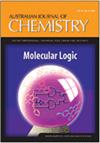Synergistic Interaction Between ATRP and RAFT: Taking the Best of Each World*
IF 1
4区 化学
Q4 CHEMISTRY, MULTIDISCIPLINARY
引用次数: 42
Abstract
This review covers recent developments on the combination of atom transfer radical polymerization (ATRP) and reversible addition–fragmentation chain transfer (RAFT) polymerization to produce well controlled (co)polymers. This review discusses the relative reactivity of the R group in ATRP and RAFT, provides a comparison of dithiocarbamate (DC), trithiocarbonate (TTC), dithioester (DTE), and xanthate versus bromine or chlorine, and an optimization of catalyst/ligand selection. The level of control in iniferter polymerization with DC was greatly improved by the addition of a copper complex. New TTC inifers with bromopropionate and bromoisobutyrate groups have been prepared to conduct, concurrently or sequentially, ATRP from Br-end groups, ATRP from the TTC moiety, and RAFT polymerization from the TTC moiety, depending on the combination of monomer and catalyst employed in the reaction. The use of concurrent ATRP/RAFT (or copper-catalyzed RAFT polymerization or ATRP with dithioester leaving groups), resulted in improved control over the synthesis of homo- and block (co)polymers and allowed preparation of well-defined high-molecular-weight polymers exceeding 1 million. Block copolymers that could not be prepared previously have been synthesized by sequential ATRP and RAFT polymerization using a bromoxanthate inifer. A simple, versatile, and one-step method involving atom-transfer radical addition–fragmentation (ATRAF) for the preparation of various chain transfer agents (including DC, DTE, and xanthate) in high purity is discussed and a one-pot, two-step polymerization starting with a RAFT agent synthesized by ATRAF, followed by polymerization, is demonstrated.ATRP与RAFT的协同作用:各取其精华*
本文综述了原子转移自由基聚合(ATRP)和可逆加成-破碎链转移聚合(RAFT)相结合制备可控(co)聚合物的最新进展。本文讨论了ATRP和RAFT中R基团的相对反应性,比较了二硫代氨基甲酸酯(DC)、三硫代碳酸酯(TTC)、二硫酯(DTE)和黄药与溴或氯的比较,并优化了催化剂/配体的选择。铜络合物的加入大大提高了用直流电聚合的控制水平。根据反应中使用的单体和催化剂的组合,制备了具有溴丙酸和溴异丁酸基团的新型TTC衍生物,可以同时或依次进行br端基的ATRP、TTC部分的ATRP和TTC部分的RAFT聚合。同时使用ATRP/RAFT(或铜催化RAFT聚合或带二硫酯离去基的ATRP),可以更好地控制homo-和block (co)聚合物的合成,并可以制备定义明确的高分子量聚合物,超过100万。利用溴黄药衍生物,通过序次ATRP和RAFT聚合合成了以前无法制备的嵌段共聚物。讨论了一种简单、通用的一步式原子转移自由基加成-破碎(ATRAF)制备各种高纯度链转移剂(包括DC、DTE和黄药)的方法,并演示了由ATRAF合成的RAFT剂开始的一锅两步聚合,然后进行聚合。
本文章由计算机程序翻译,如有差异,请以英文原文为准。
求助全文
约1分钟内获得全文
求助全文
来源期刊

Australian Journal of Chemistry
化学-化学综合
CiteScore
2.50
自引率
0.00%
发文量
65
审稿时长
1.3 months
期刊介绍:
Australian Journal of Chemistry - an International Journal for Chemical Science publishes research papers from all fields of chemical science. Papers that are multidisciplinary or address new or emerging areas of chemistry are particularly encouraged. Thus, the scope is dynamic. It includes (but is not limited to) synthesis, structure, new materials, macromolecules and polymers, supramolecular chemistry, analytical and environmental chemistry, natural products, biological and medicinal chemistry, nanotechnology, and surface chemistry.
Australian Journal of Chemistry is published with the endorsement of the Commonwealth Scientific and Industrial Research Organisation (CSIRO) and the Australian Academy of Science.
 求助内容:
求助内容: 应助结果提醒方式:
应助结果提醒方式:


